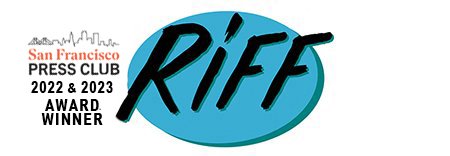INTERVIEW: Avril Lavigne finds strength in her inner warrior for ‘Head Above Water’

Avril Lavigne. Courtesy David Needleman.
The lights dimmed at Seattle’s Paramount Theatre. The crowd rose in anticipation. Canadian songstress Avril Lavigne took the stage in a flowing white dress and sang the opening line of the first song on her latest release: “I’ve gotta keep the calm before the storm.”
Avril Lavigne
Jagwar Twin
8 p.m., Tuesday, Sept. 17
Fox Theater – Oakland
Tickets: $60-$80.
With that, Lavigne’s first headlining tour in more than five years was underway. It was a moment steeped in anticipation and triumph for Lavigne’s fans, as well as the singer; the end of of long comeback journey and the beginning of a new chapter.
“I thought I was going to be really nervous, and I wasn’t,” Lavigne said after a long pause to reflect on her emotions of the moment. “I was really calm and present and felt super grounded.”
Lavigne said she felt the most emotion in regaining the familiarity she felt being back on stage.
“It was exciting; it was like taking the summer off and going back to school to see all your friends,” she said. “I really had FOMO; I was really missing this.”
Rekindling the connection with her fans helped make the comeback possible and to make the moment even more special.
Lavigne’s return to music came with the release of her sixth album, Head Above Water, her most mature and confident work. Following a Lyme disease diagnosis in 2015, Lavigne took a break from music to battle the debilitating symptoms. It was a fight that drained Lavigne and led her to question whether continuing a career in the music world she loved was even possible.
“There was a time when I was so sick I didn’t think I’d be able to continue,” she said. “I didn’t think I’d have the life. I didn’t think I’d be able to work or play music anymore, I thought it was all over.”
Instead Lavigne used music as a vehicle to help drive her recovery. At her most desperate moment, she wrote the first two songs that would become the lyrical foundation for the album that would follow: “Head Above Water” and “Warrior.”
“When I started writing and recording and getting my life back, piece by piece, I realized how much I love music and how important it is to me,” she said. “Music is not only healing for me to write and play, but for others to hear as well.”
The lyrics began to flow out more easily. She even considered writing a book of poetry. These songs eventually morphed into what would become the mid-tempo acoustic jam “Birde” and the haunting dramatic power ballad “I Fell In Love with the Devil.” Lavigne relished the opportunity to write freely without needing to make the conscious effort to go to the studio and think about what she’d like to write about—her creative process with past albums.
The album took three years to make.
While the subject matter is deeply personal for Lavigne, it’s also gratifying for her to see and hear the way her fans interpret the songs and apply them to their own situations. It was a sensation she realized immediately in playing the songs on stage for the first time. She’s seen some fans crying. Others have written her letters sharing personal stories.
“I can see how much these songs mean to people when I’m on stage; my shows are emotional” she said. “A girl the other night outside a concert told me that my songs helped her get through her cancer treatment. “It’s amazing because this music is so real for me. I’m just so glad to hear that it encourages other people and gives them strength.”
Lavigne burst on the scene back in 2002, releasing her breakthrough debut Let Go when she was 18. The album spawned generational pop smashes like “Complicated,” “Sk8er Boi” and “I’m With You.” Lavigne’s sound was the pop rock counter to the boy bands and pop divas that occupied Top 40 radio in the early aughts. The music had distorted guitars, energy and sounded like it came from musicians playing as opposed to walls of loops and synths.
Lyrically, her songs not only tackled love, relationships and growing up but also spoke to themes of female empowerment before the development of the modern movement.
The post-grunge-influenced Under My Skin (2004) featured empowering songs like “Don’t Tell Me” and “Nobody’s Home.” The fame overwhelms many new artists but Lavigne said she was prepared through years of performing.
“I just remember having a blast; I was really ready” she said. “I was super driven and had been performing on stage since I was 6 or 7 years old. When I got the record deal I knew it was go-time.”
Her influence can be felt on the charts today. Billie Eilish has praised Lavigne as one of her major influencers. Eilish even visited Lavigne in her rehearsal space prior to her tour, a photo that Lavigne documented on Twitter.
“I’m super proud of her, she’s just slaying so hard right now,” Lavigne said.
With the heavy emotional context of the album, Lavigne wanted to bring high drama to her live show while still infusing the fun pop and rock for which she’s known. She based the visuals off of her two cinematic music videos for “Head Above Water” and “I Fell In Love with the Devil.” She also had a hand in selecting wardrobe, lighting design and the instruments.
“I wanted it to have a fire and water theme,” she said. “I have those visuals through the whole show. I wish I could do actual rain and real fire but that’s not possible. … This entire process has been so meaningful and special, I’ve re-fallen in love with music all over again. When we were able to take the show live it was just fucking magical.”
Follow writer Mike DeWald at Twitter.com/mike_dewald.
